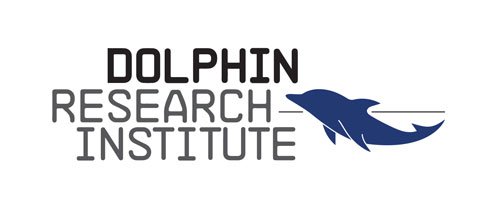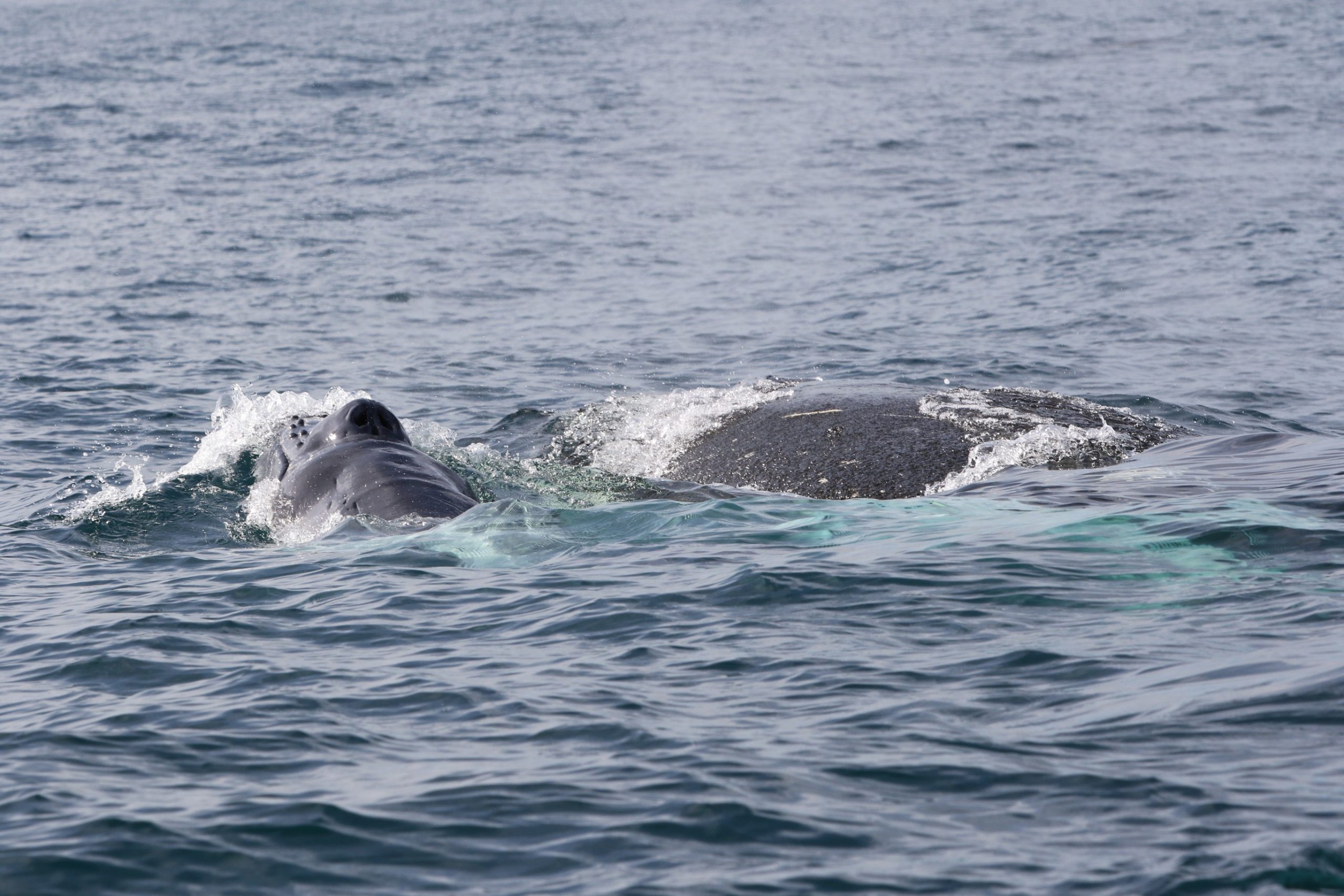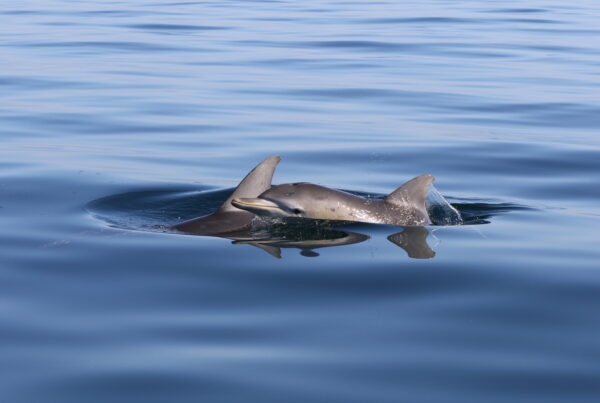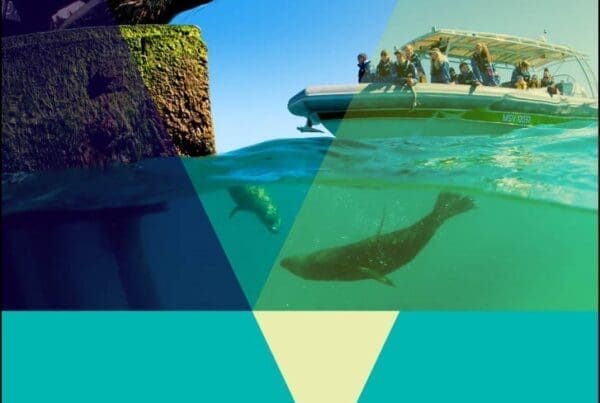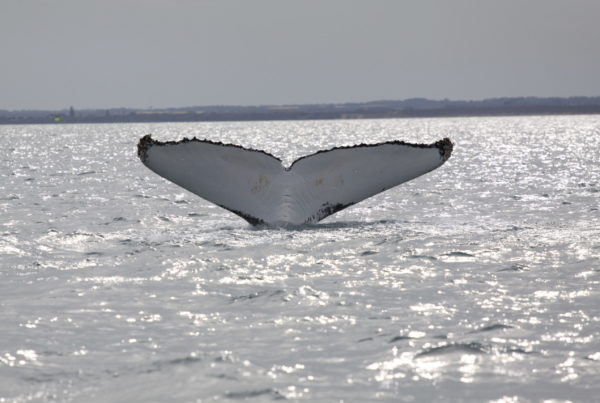Smallest Newborn Humpback Whale Recorded In Victorian Waters Amazes Researchers
The discovery of a newborn humpback whale in deep water off Cape Woolamai recently is only the third ever recorded in Victorian waters. Based on the calf’s appearance, and comparing images from previous sightings, this is by far the youngest humpback whale calf on record in Victorian waters.
Dolphin Research Institute (DRI) researchers believe the calf was only hours, or at the most 2 days, old. It was pale, under 4 metres long, its dorsal fin was flopped over, and it had a disproportionate rostrum and prominent foetal folds. The foetal folds are creases in the calf’s skin and insulating blubber caused by being curled up in the womb. These folds are prominent in newborn whales and dolphins, and typically fade as the calf matures.
It’s possible that our cold waters could be dangerous for the calf. David Donnelly, DRI’s Research Officer (below), said “the mother was one of the largest humpback whales the DRI team has ever observed anywhere, possibly nearly 16 metres long and very girthy”. Hopefully the mother’s size and condition indicates an experienced mother and she will be able to slowly move her calf to warmer waters before they return to the Antarctic feeding grounds in the coming summer.

She needs to be “girthy” to have the reserves to supply her calf with the many hundreds of litres of milk every day during the 10-11 months until the calf is weaned.
Humpback calves are usually born and spend their first months in warmer waters off northern New South Wales and Queensland, unlike southern right whales that normally give birth in Victoria’s relatively cold waters
DRI’s research team left the pair after just 10 minutes to minimise interference at this crucial stage of the calf’s life. Our approach is strictly controlled under a research permit. It’s important to remind vessel skippers not to approach whales closer than 200m in a powered vessel or 300m on a jetski.
This is a very unusual event and extremely important addition to the Two Bays Whale Project Victorian database, which so far in the 2018 season has recorded record numbers of humpback whales off Victoria’s central coast.
DRI asks the community to join in the Two Bays Whale Project and report sightings of whales from land and water. The Two Bays Whales Project is a collaboration between the Dolphin Research Institute and Wildlife Coast Cruises.
The community is urged to support the important work of the Dolphin Research Institute by donating or joining the ‘i sea, i care’ Communities program.
For details of Two Bays, including the 2017 Report and to report sightings, go to: www.dolphinresearch.org.au .
